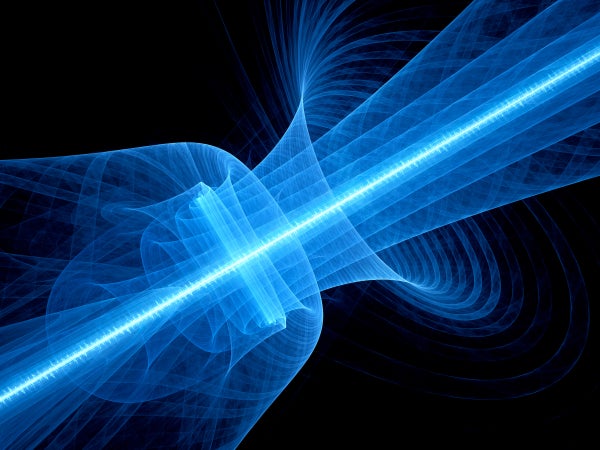This article was published in Scientific American’s former blog network and reflects the views of the author, not necessarily those of Scientific American
By 1931, Kurt Gödel had proven his second incompleteness theorem, which states that a formal logical system cannot prove itself consistent. This theorem throws cold water on the ultimate ability to prove “theories of everything,” which have become fashionable in theoretical physics. It implies that any scientific theory is incomplete.
Galileo Galilei went beyond the limitations of pure logic and argued that any physical theory claiming to describe reality must also make predictions that stand up to the scrutiny of experiments. He found experimentally, for example, that heavy objects do not accelerate faster than light objects under the influence of gravity, as previously thought. This result laid the foundation for Albert Einstein’s later realization that gravity is not a force but the curvature of spacetime that all test objects respond to in the same way.
Galileo’s dictum, based on humility, established the bedrock of modern physics over the years. But a new culture of physicists appears to challenge its underlying role now. For example, the pioneer of the theory of cosmic inflation, Alan Guth, replied during a panel discussion to my question of whether inflation is falsifiable that this theory cannot be proven false. He argued that it is a mathematical framework, like gauge theories, that must be valid, and the role of experiments is merely to fix its flexible degrees of freedom. In other words, the theory is adjustable enough to fit any experimental data about the universe.
On supporting science journalism
If you're enjoying this article, consider supporting our award-winning journalism by subscribing. By purchasing a subscription you are helping to ensure the future of impactful stories about the discoveries and ideas shaping our world today.
But if so, can inflation be regarded a physical theory that obeys Galileo’s dictum? How can a theory claim to explain the beginning of the universe if it cannot be proven false by some hypothetical experimental data? By now, we know of alternative origin stories for our universe, suggesting that it may have gone through a bounce from a previously contracting phase before the big bang or that it started from some special initial state associated with string theory. In two papers that I wrote recently with my Harvard colleague, Xingang Chen and collaborators, we identified an experimental test that revealed tentative evidence in the cosmic microwave background and could favor alternative scenarios over the model of inflation. In short, it subjects inflation to Galileo’s dictum.
This would hardly be the first time a mathematically ingenious theory failed to capture physical reality. After all, the geocentric Ptolemaic theory of epicycles was mathematically appealing and its framework was broad enough to describe the motion of all planets on the sky. But it was eventually disfavored relative to the heliocentric Newtonian theory of gravity because it required a large number of free parameters that had to be finely tuned individually for each planet.
Despite lessons from the history of science, the notion that some physical theories cannot be refuted, and must be intrinsically true based on abstract reasoning, is still gaining popularity. Additional examples include the hypothetical existence of the “multiverse,” the conjecture that reality is a computer simulation, applications of the AdS/CFT correspondence to the real world—which is not embedded in anti de-Sitter (AdS) space but instead in nearly de-Sitter space of a completely different geometry, or Stephen Wolfram’s new concept of a “theory of everything.” Following an inspiring colloquium that Wolfram just gave at Harvard’s Black Hole Initiative, one thought came to my mind: If this theory predicts the lowest mass possible for an elementary particle, we will be able to test it based on astrophysical data.
The real world is under no obligation to follow our blueprints, just because they are mathematically appealing or easier to formulate than some alternative. The best example is quantum mechanics, whose fundamental principles deviated qualitatively from classical physics but were forced upon us through experiments. After quantum theory was formulated, Albert Einstein debated Niels Bohr against its unexpected nonclassical interpretation, arguing in a 1926 Letter to Max Born that “In any event, I am convinced that He [God] is not playing dice.” Recent experiments have proven Einstein’s intuition false.
Human culture is filled with myths. Science aims to correct preconceived theories by emphasizing the key role of experimental verification. The natural tendency of humans to blindly follow popular conjectures should be moderated, since it places blinders on our scientific vision and suppresses progress in understanding reality.
Mathematical beauty is admirable, but in attempting to figure out reality it should be downgraded to second place relative to evidence. Physics is a dialogue with nature—accomplished through experimental testing of our ideas, and not a monologue in which we formulate our “theories of everything” and rest on our laurels. We must stay humble, keeping in mind Gödel’s proof that all mathematical systems are logically incomplete and Galileo’s insight that most of them may have nothing to do with reality.
